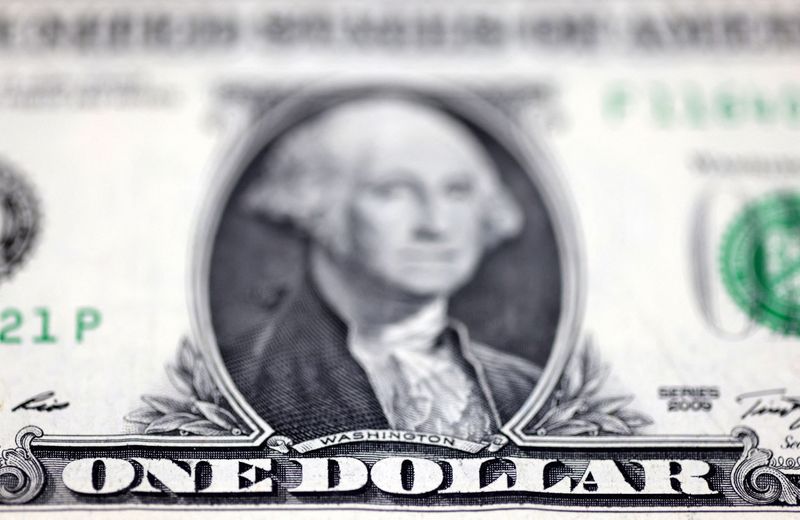 © Reuters. FILE PHOTO: U.S. Dollar banknote is seen in this illustration taken July 17, 2022. REUTERS/Dado Ruvic/Illustration/File Photo
© Reuters. FILE PHOTO: U.S. Dollar banknote is seen in this illustration taken July 17, 2022. REUTERS/Dado Ruvic/Illustration/File Photo
By Caroline Valetkevitch
NEW YORK (Reuters) -The dollar eased against the Japanese yen on Tuesday after data showed Japan's core consumer inflation exceeded forecasts while U.S. durable goods orders fell more than expected in January.
Overnight data out of Japan kept alive some expectations that the Bank of Japan might end negative interest rates by April.
In the U.S., the Commerce Department's Census Bureau said orders for durable goods, items ranging from toasters to aircraft meant to last three years or more, tumbled 6.1% last month, exceeding the 4.5% decline forecast by economists polled by Reuters.
Markets have recently pulled back expectations on the timing and size of Federal Reserve rate cuts this year as the U.S. economy remains strong and inflation pressures stubborn.
Against the yen, the dollar dipped 0.1% to 150.56, while the U.S. dollar index, which measures the currency against a basket of peers, was last up 0.08% at 103.86.
"Inflation numbers have been drifting a bit lower in Japan over the past few months, but today's numbers did suggest inflation is sticky even in Japan," said Shaun Osborne, chief currency strategist at Scotiabank in Toronto.
"It probably does mean we'll get a mild series of rate increases in Japan in the next few months."
Bitcoin hit a two-year high on signs large players were buying the cryptocurrency.
Bitcoin was last up 5.22% at $57,513, while ether rose 2.26% at $3,258.
In other U.S. economic news, the consumer confidence index slipped to 106.7 this month - short of forecasts - from a downwardly revised 110.9 in January.
The U.S. core personal consumption expenditures (PCE) price index, due on Thursday, is expected to be one of the more important reports of the week for the market. Forecasts are for a rise of 0.4%.
"We're waiting for the PCE data to give us a stronger sense of direction perhaps," Osborne said. "I think we're prepped for slightly stronger numbers; it probably at this point would have to be a big upside surprise to really get the dollar strengthening."
The euro was last down 0.1% versus the greenback. It has been rising since mid-February, when it hit its lowest since Nov. 14.
Analysts said the single currency strengthened as markets scaled back bets on future European Central Bank rate cuts to 90 bps by year-end, amid encouraging signals from the economy, which supports expectations for a pick-up in growth in the second half of 2024.
German states, France and Spain will release inflation data on Thursday ahead of the euro area's figures due on Friday.
ECB officials have sounded more cautious about a quick easing of monetary policy, with President Christine Lagarde saying wage growth remains robust, while ECB dove Yannis Stournaras ruled out a rate cut before June.
The dollar strengthened 0.06% at 7.214 versus the offshore Chinese yuan. The People's Bank of China set the midpoint rate, around which the yuan is allowed to trade in a 2% band, at 7.1057 per dollar.
The kiwi weakened 0.06% versus the greenback at $0.617, with traders gearing up for what could turn out to be a significant policy meeting by the Reserve Bank of New Zealand (RBNZ) on Wednesday.
Markets are pricing in a one-in-three chance the RBNZ will raise its 5.5% official cash rate to combat stubborn inflation.

